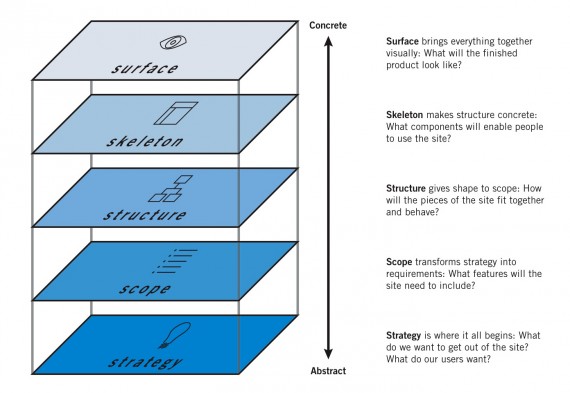Google's purchase of the London based artificial intelligence startup DeepMind created plenty of headlines earlier this week. And the majority of the initial reporting revolved around speculation of Google's plans to dominate a robotic future, (including more than one reference to Terminator's Skynet.)
 Image credit: terminator.wikia.com
Image credit: terminator.wikia.com
However, a few days after the headlines more in depth reporting began to surface around who and what DeepMind is all about, as well as more accurate assessments of what may have motivated Google's purchase of the firm. Liz Gannes and James Temple of Re/code followed up their initial breaking of the news with an excellent post titled, "More on DeepMind: AI Startup to Work Directly With Google's Search Team". To sum it up:
Taken together, the deals might all seem to add up to Skynet. But sources said DeepMind is actually being inserted into Google’s oldest team: Search.
The Re/code post goes onto outline the people and projects around Google's evolving Search team:
Or, as search is known at Google today, the “Knowledge” group — so-called because it no longer just finds keywords on Web pages, but instead connects larger concepts.
And continues:
Deep learning is a form of machine learning in which researchers attempt to train computer algorithms to spot meaningful patterns by showing them lots of data, rather than trying to program in every rule about the world. Taking inspiration from the way neurons work in the human brain, deep learning uses layers of algorithms that successively recognize increasingly complex features —
So, how does this all relate to UX principles, SEO, and content strategy?
Well, in countless ways beyond my understanding, that will reveal themselves over time. But for me, it brought me back to the seemingly simple, yet multi-faceted principles that underlie much of our work within the world of Search marketing, which is understanding the balance between recognizing first the human experience and interaction with a website, versus recognizing how machines ("robots") process and cater to that experience.
This led me to want to learn more about the evolutionary relationship between user experience, SEO, and content strategy. This is a relationship that others have explored more in depth, and with more critical insights. (Check out this great Moz Whiteboard Friday, or this article from Kristina Halvorson, Content Strategy and UX: A Modern Love Story for further material.)
For me, I was inspired to dig into a classic guide to UX written by Jesse James Garrett, titled The Elements of User Experience. And I was immediately struck by how informative I found the early chapters and Garrett's descriptions of the elements of UX for referencing when developing a content strategy.
Garret breaks down the elements of UX as follows:
 Image credit: Jesse James Garrett, Elements of UX
Image credit: Jesse James Garrett, Elements of UX
These elements of user experience obviously have considerable overlap with other web based disciplines, any many of us draw on these elements everyday in the work we do for clients. However, I specifically found things to draw on for content strategy when reading Garrett's descriptions for the first two stages of Strategy and Scope.
In the strategy phase, Garrett describes how to develop a strategy document of "vision document" that can be used to capture:
- User Needs - compiling user segmentation based on audience demographics, using usability and user research through market research, contextual inquiry, task analysis
- Business Goals - internal site objectives
- Brand Identity - defining the impression wished to create for users
- Success Metrics - the indicators used to track defined behavior on the site
The use of a strategy document could serve the same purposes for defining a content strategy. I have found the need for a document like this to become more and more crucial for developing an effective content strategy. This type of document can be used as a touchstone as well as used to build support when necessary for specific implementation. These are the same underlying principles that need to be understood and defined when developing an over-arching content strategy.
When discussing the Scope phase for UX, Garret goes deeper into how to flesh out content requirements. He starts with pointing out that the types of content should be identified right away (too often text is still assumed to be the only form of content when content strategy is being discussed.) Yet, identifying all content types in the planning phase allows teams to plan for the resources that will be needed in implementing the content strategy.
My favorite points that Garrett mentions in the Scope phase where I see further parallels for using to develop a content strategy are as follows:
- Don't get confused by the format of a type of content and its purpose. The example given is FAQ sections of websites, too often the "frequently" part of FAQ is left behind when developing this type of resource.
- Define the expected size of your content features: word count, file sizes, audio, video.
- Identify who will be responsible. Too often once a content feature is validated with the purpose and goals for the content, the creator of that content is not discussed up front.
- Keeping content dynamic. Identify how frequent the content will be updated. The frequency should be based on the defined strategic goals. Approaching content as if you can post it and forget it leads to a site that over time does not meet a user's needs. *This is one of the most important, that I feel is often missed when planning out content strategy.
- Defined which audience a content feature is intended for. This will ultimately lead to better decisions being made on how best to present that content.
- Content inventory - this is a very critical step when working with a site that already has a considerable amount of content. It can be tedious, but can not be over-looked when factoring in the other parts of creating an effective content strategy.
Overall, I found reading Garrett's book provided a refreshing reboot to many of the principles and ideas that are involved in developing an effective content strategy. And as Google's algorithm continues to evolve, so too does the relationship between user experience design, SEO, and content strategy.


